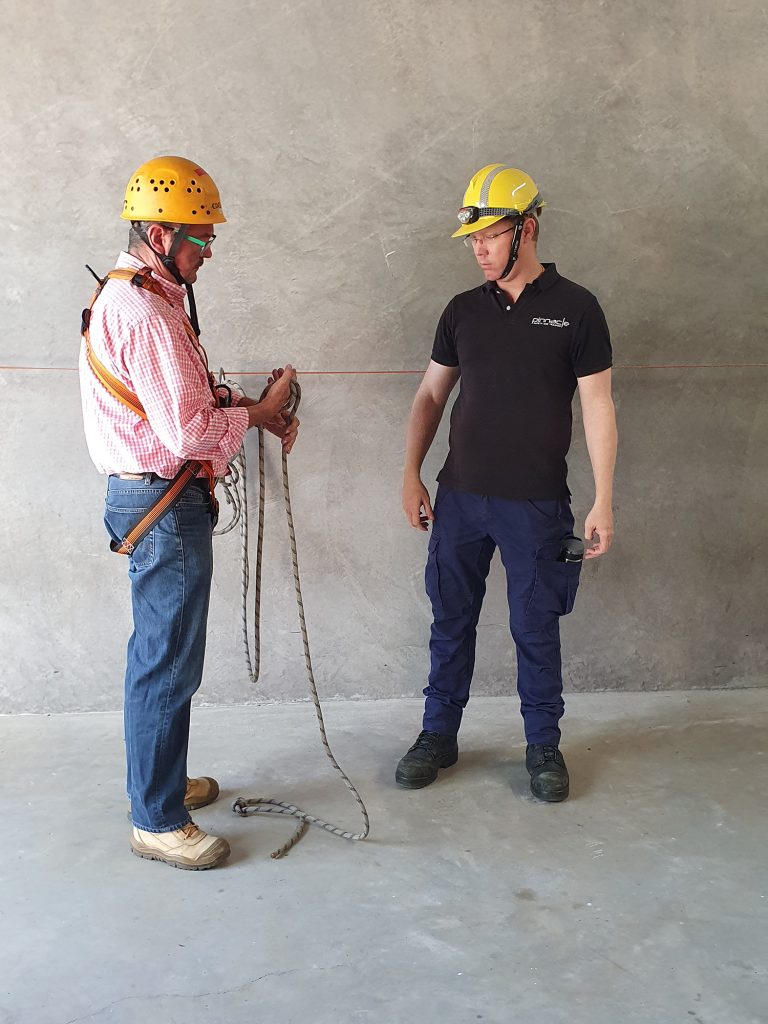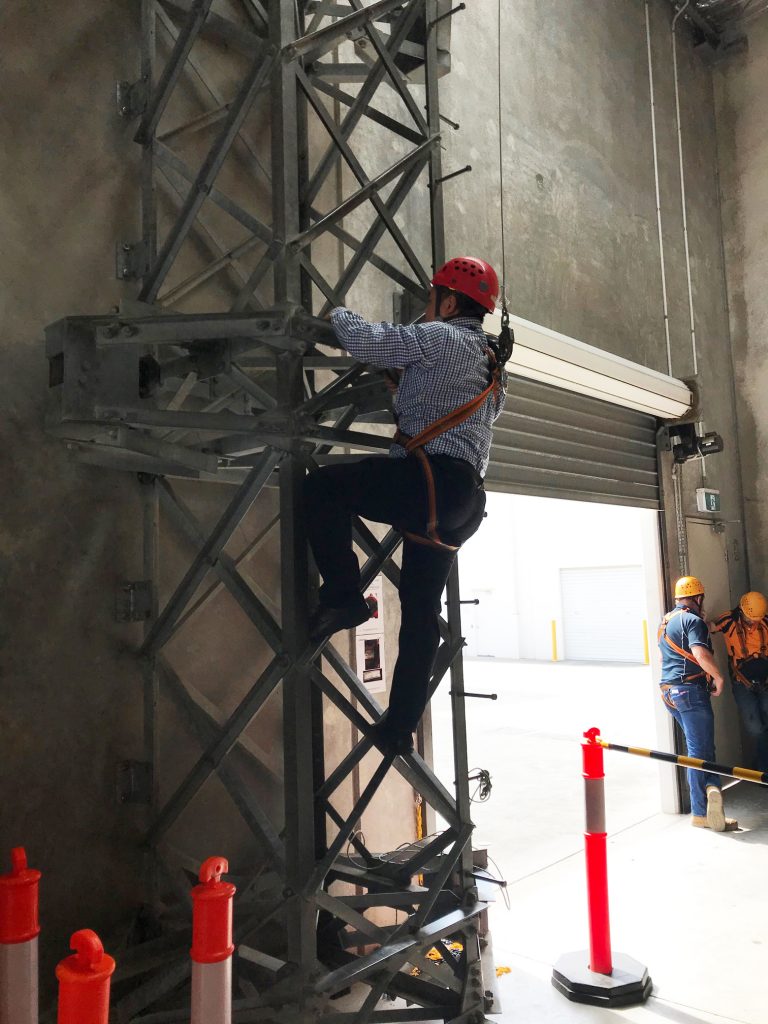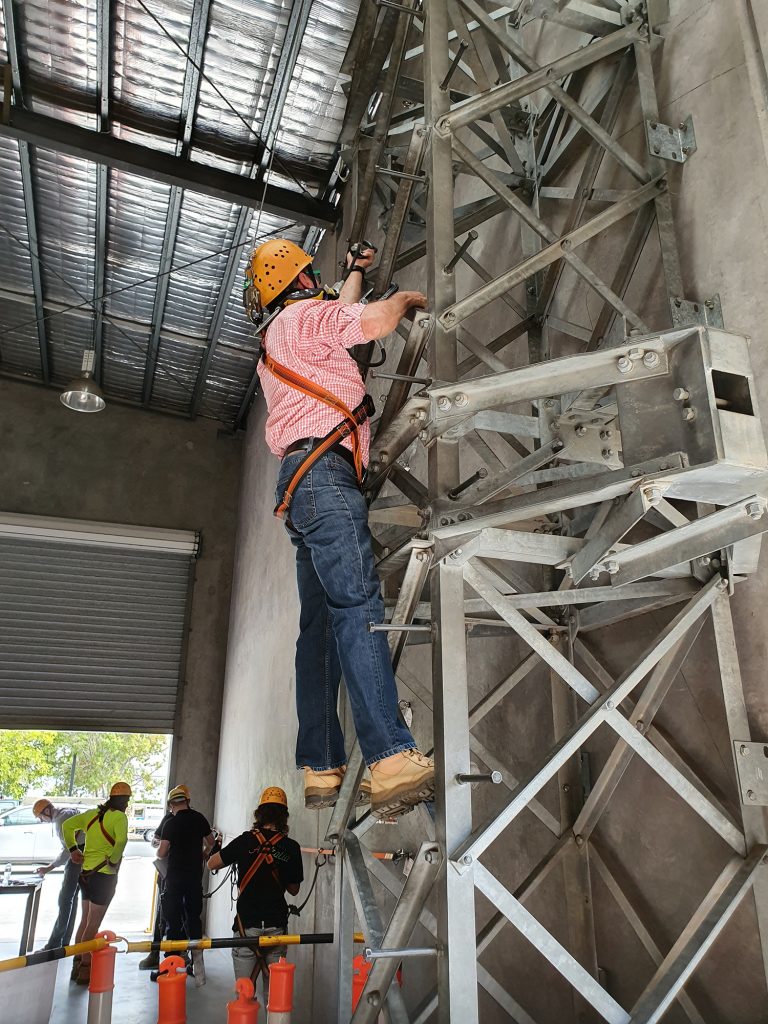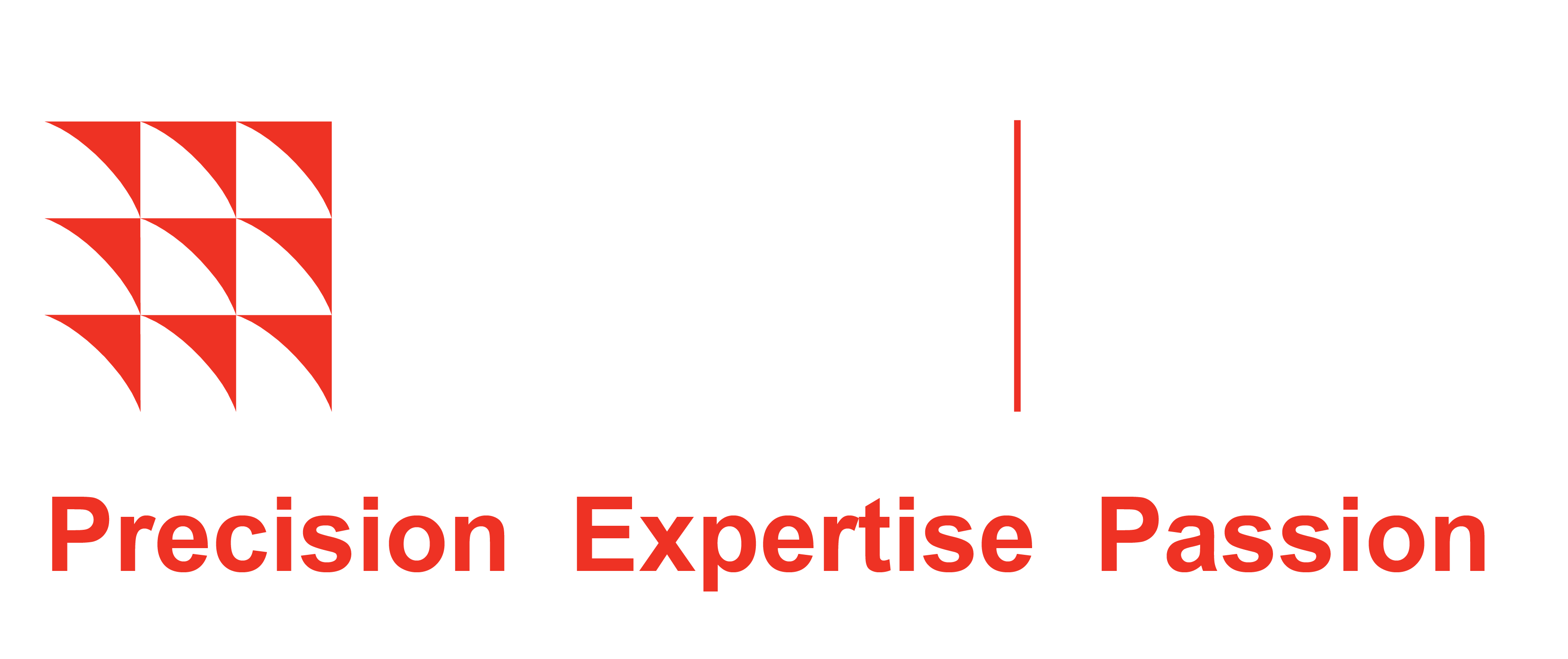PEP Solutions Senior Building Consultants and Architects Linh Nguyen and Brian Hickey undertook a ‘Work Safely at Heights’ certificate course through Pinnacle Safety Training at their facility at Murarrie. It was a full day course commencing with classroom theory in the morning and practical experience in the afternoon.
Practical training sessions involved reviewing all equipment, including anchor points and static safety lines for current test dates, checking for damage, wear and tear before proceeding. One exercise required using an energy absorbing lanyard and double scaffold hooks to scale and descend a vertical structure, always ensuring that there was always one connection to the structure above shoulder height. The other exercise required using a lifeline rope with rope adjuster, attached to a static safety line (or roof anchor point), and adjusting the length so as to not be able to fall off the edge of the roof (represented by a line on the ground) accidentally or deliberately.

While one might have thought that the training should have extended to throwing oneself off a roof to experience how the harness and equipment will work, it was highlighted in a video using a manikin, that one can sustain life threatening injuries due to the abrupt halt that your body will sustain from falling two metres plus approximately another 900mm as the energy absorber kicks in. Hence the legislation requires two persons in attendance where there is a risk of fall “from one level to another” so that rescue and medical intervention can happen as soon as possible.

This course better equips us when we undertake inspections across a broad range of buildings which includes gaining access to roofs to provide comment on safe access and serviceability, age and condition, construction, waterproofness, wear and tear, damage, deterioration, repairs, replacement, condition of skylights / roof lights, penetrations such as for, electrical, air conditioning / mechanical ventilation plant and platforms, box gutters, eaves gutters, parapets / fascias, etc. There would be those out there who would suggest using a drone instead, which has included discussions in exploring this option. Given the detail and scrutiny with which we examine a building, and the level of detailing and reporting, drones have limitations, hence they would be utilised to supplement the investigation process rather than replace the recognised traditional building inspection process.

If you would like to know more about our process with property inspections and how we can help you, contact us today!



